The Intel Core i9-9900KS Review: The 5 GHz Consumer Special
by Dr. Ian Cutress on October 31, 2019 10:45 AM ESTGaming: Ashes Classic (DX12)
Seen as the holy child of DirectX12, Ashes of the Singularity (AoTS, or just Ashes) has been the first title to actively go explore as many of the DirectX12 features as it possibly can. Stardock, the developer behind the Nitrous engine which powers the game, has ensured that the real-time strategy title takes advantage of multiple cores and multiple graphics cards, in as many configurations as possible.
As a real-time strategy title, Ashes is all about responsiveness during both wide open shots but also concentrated battles. With DirectX12 at the helm, the ability to implement more draw calls per second allows the engine to work with substantial unit depth and effects that other RTS titles had to rely on combined draw calls to achieve, making some combined unit structures ultimately very rigid.
Stardock clearly understand the importance of an in-game benchmark, ensuring that such a tool was available and capable from day one, especially with all the additional DX12 features used and being able to characterize how they affected the title for the developer was important. The in-game benchmark performs a four minute fixed seed battle environment with a variety of shots, and outputs a vast amount of data to analyze.
For our benchmark, we run Ashes Classic: an older version of the game before the Escalation update. The reason for this is that this is easier to automate, without a splash screen, but still has a strong visual fidelity to test.
Ashes has dropdown options for MSAA, Light Quality, Object Quality, Shading Samples, Shadow Quality, Textures, and separate options for the terrain. There are several presents, from Very Low to Extreme: we run our benchmarks at the above settings, and take the frame-time output for our average and percentile numbers.
All of our benchmark results can also be found in our benchmark engine, Bench.
| AnandTech | IGP | Low | Medium | High |
| Average FPS | 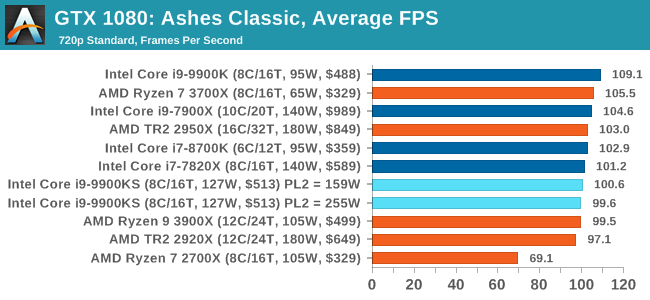 |
 |
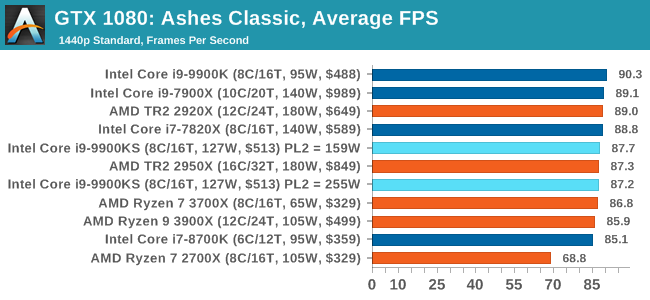 |
 |
| 95th Percentile | 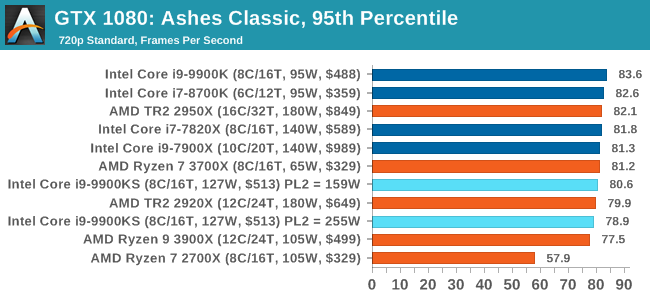 |
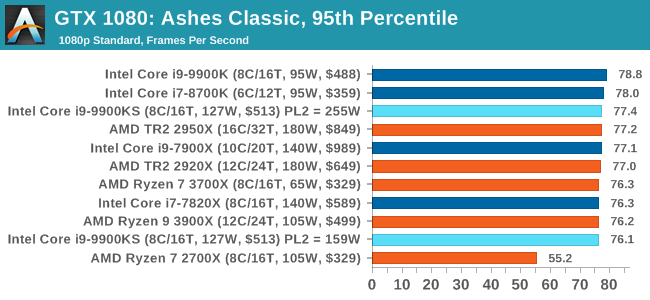 |
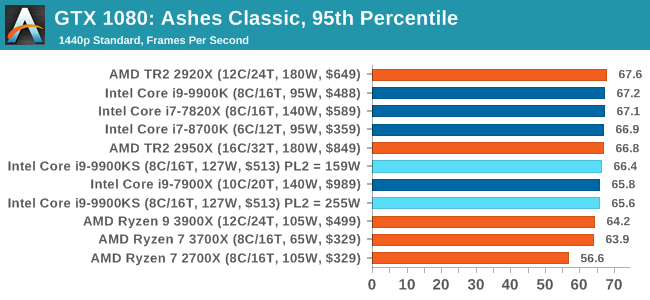 |
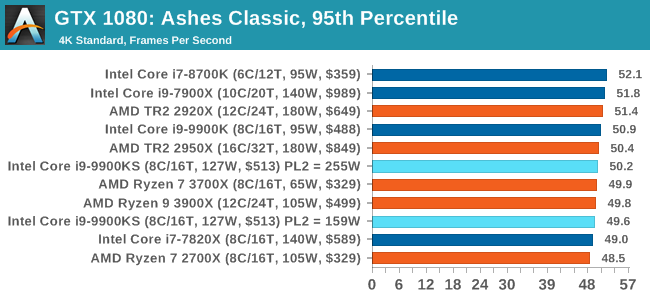 |












235 Comments
View All Comments
Dudler - Thursday, October 31, 2019 - link
P4 cough cough..Hifihedgehog - Friday, November 1, 2019 - link
*cough, cough* Emergency Edition *cough, cough*Man, whatever is going around is really catchy.
Spunjji - Friday, November 1, 2019 - link
It's vaguely amusing how they go for the same stock approaches every time. When a product becomes noncompetitive, either release a "special" bin that blows through acceptable power/stability limits, or ram a server CPU down the stack into "consumer" territory. The EE has a special place in my heart because they panicked so hard they did both of those things.Samus - Friday, November 1, 2019 - link
And much like the P4 EE, the power consumption is through the roof. Ahh the days of Presshot warming my dorm seeding a Napster queue.You really have to appreciate (again) what AMD is able to pull off here at 65w. It's literally on the heals of a CPU burning 3x more power.
Notmyusualid - Monday, November 4, 2019 - link
https://www.phoronix.com/scan.php?page=article&...Death666Angel - Saturday, November 2, 2019 - link
All true, but AMD does the same thing, as does Nvidia when it comes to GPUs. Remember the GTX 480? Or the FX-9590. :) If you mess up, that is mostly your only option to have something. Some people don't care much about efficiency and just want the fastest at a certain thing. They probably did the ROI numbers and it came out positive for them.Ratman6161 - Monday, November 4, 2019 - link
But...there are still quite a few tests where there is an orange bar at the top :). One thing I'm a bit curious about on the AMD side though is that there are several cases where the 3700X beats the 3900X. 3900X is both more cores and higher clocked so shouldn't it win everywhere?Also for those of us where price is an obejct, that 3700X looks pretty darn good against most everything else. :)
amnesia0287 - Friday, November 8, 2019 - link
It’s possible it’s related to the quality of the cores. With the Ryzen chips not all cores have the same limits. So in theory you could have a chip with less total cores but more higher spec’d ones.MDD1963 - Thursday, November 7, 2019 - link
Little need for any 'panic' as, gaming-wise at least, all AMD has managed is to tie the 8700K.....; everything 9700K and higher in the product stack remains virtually unopposed.WaltC - Monday, November 11, 2019 - link
I'm still trying to figure out how a higher clocked Intel CPU which processes data slower than a lower-clocked AMD cpu is a "clear advantage" for Intel....;) Perhaps Dr. Cutress might enlighten me...?....;)